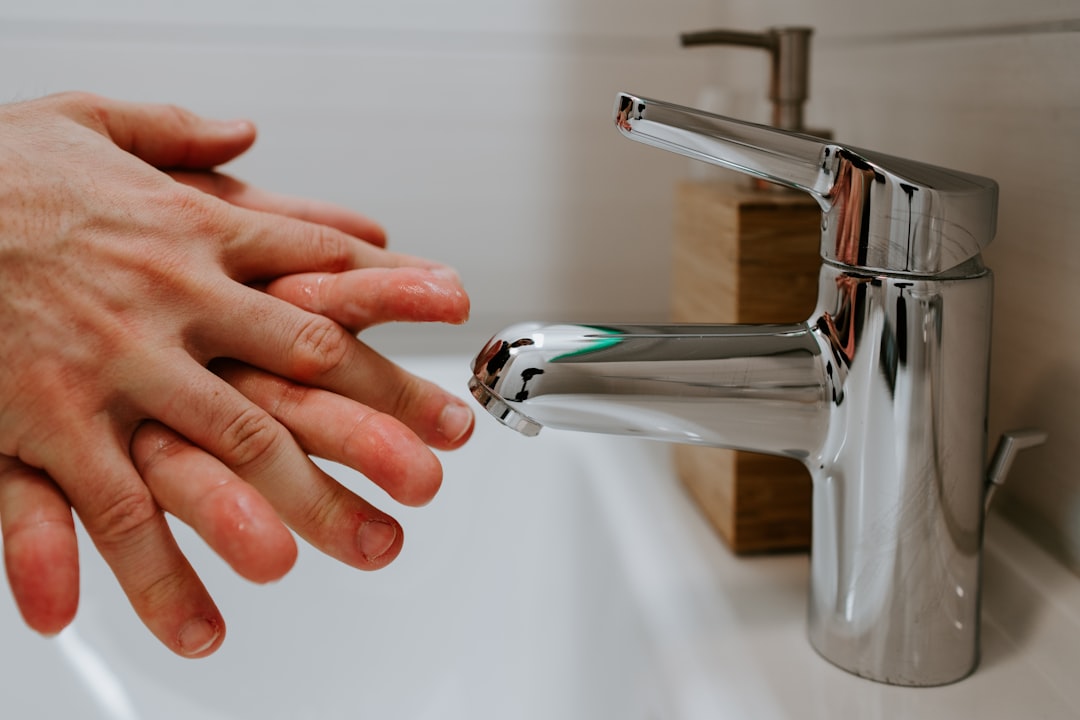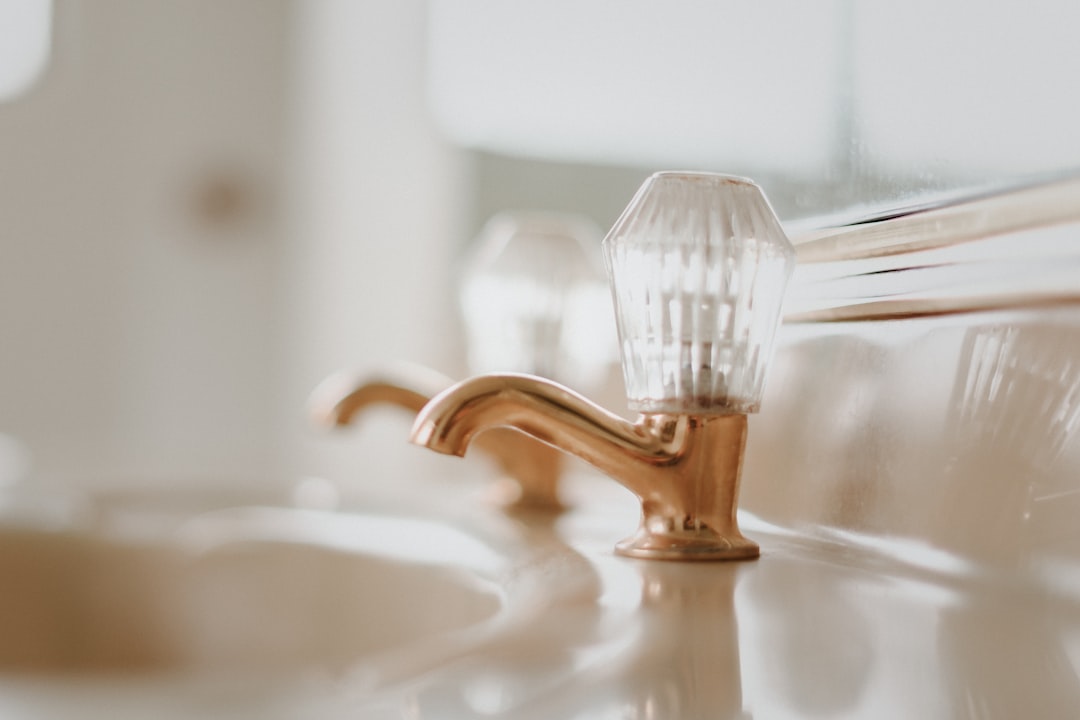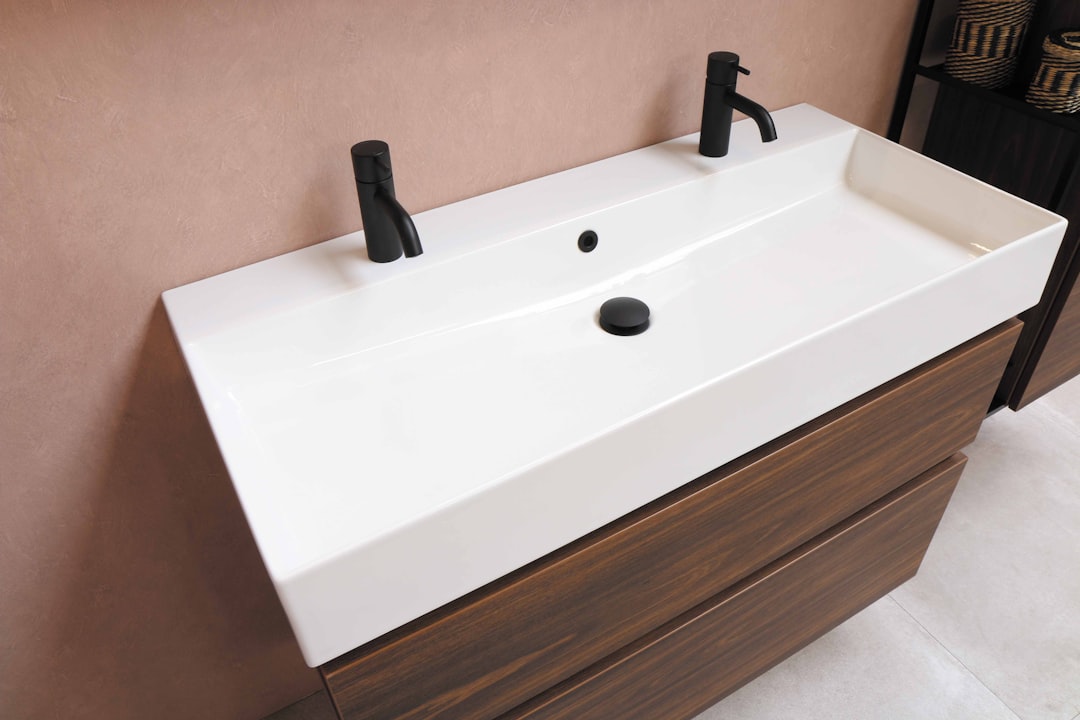Have you ever found yourself standing in front of your bathroom sink, puzzled about which way to turn the faucet? It’s a common question and can be confusing, especially if you’re not familiar with plumbing.
But don’t worry, we’ve got you covered! In this article, we will answer the burning question “Which Way Do Bathroom Faucets Turn?” in a simple and easy-to-understand manner.
So whether you are trying to figure out how to wash your hands or adjust the water temperature for your shower, with our tips and tricks, you’ll never have to wonder which way to turn those pesky handles again!
Faucets with cross-shaped handles always open counterclockwise for both hot and cold water. To remember which way to turn the handle, use the phrase lefty loosey, righty tighty like a screw. Turning the handle to the left loosens the faucet, and turning it to the right tightens it. This is a helpful trick to know when using these types of faucets.
How To Identify Hot & Cold Taps?
When it comes to bathroom faucets, it’s important to know which way the handles turn for each temperature.
This can vary depending on the type of faucet and handle, but here’s a simple method that applies in most cases.
- First, identify the hot and cold taps.
- One easy way to do this is by looking for color-coded labels or markings. Typically, red is used for hot water and blue is used for cold water.
- If your faucets don’t have color coding or other clear markings, try turning on the water to see which tap gets hot and which one stays cold.
- Once you’ve identified the hot and cold taps, remember this simple rule: “lefty loosey, righty tighty.”
- In other words, turning the tap counterclockwise will usually open it (turning left), while turning it clockwise will close it (turning right).
If you have cross-shaped handles or lever handles on your faucets, they typically turn towards you (down) for off and away from you (up) for on.
And if you have knob handles instead of levers or crosses make sure that left side turns counter-clockwise to turn on while right side turns clockwise.
By keeping these basic rules in mind when using your bathroom faucets – identifying hot & cold taps by colors/markings; remembering “lefty loosey” = counterclockwise/open & “righty tighty”= clockwise/close; paying attention to how different shaped handles are turned(on/off);
You could avoid some plumbing damage prevention issues , making life easier with an easy-to-remember method!
What Does The History Say About Having The Hot Water Tap On The Left?
Have you ever wondered why the hot water tap is usually on the left and the cold water tap is on the right? Well, it turns out that there’s a historical reason for this.
Back in the day, plumbing was not as advanced as it is today. The first indoor plumbing systems were created in ancient Rome using lead pipes.
These pipes could corrode easily and release toxic chemicals into the water supply if they weren’t frequently replaced.
To prevent damage to pipes caused by high temperatures, people would separate their hot and cold taps.
Hot water was often supplied directly from a stove or fireplace, so it made sense to have these taps closer together for ease of access.
Since most people are right-handed, having the hot tap on the left side allowed them to turn it on with their left hand while still holding something with their right hand.
While modern plumbing has eliminated many of these concerns, we still see this arrangement of taps today because it’s easy to remember and for preventing potential damage if someone accidentally turns on only one handle instead of both.
Color Coded Labels:
Many modern bathroom faucets come with color-coded labels to help you identify which handle controls hot water and which one controls cold water.
This is a simple and easy-to-remember method that can save you from accidentally scalding yourself or having to test the water temperature repeatedly.
Generally, the hot water tap is labeled with a red indicator while the cold water tap has a blue indicator. Some manufacturers even include H (for hot) and C (for cold) markings on their faucets to make identification easier.
If your faucet doesn’t have any markings, consider adding some yourself using waterproof stickers or paint markers that won’t damage your plumbing.
Using color-coded labels may seem like an obvious solution but it’s also very effective in preventing any confusion, especially when you’re half-asleep or in a hurry.
It’s also much more affordable than replacing your entire faucet if it turns out you’ve installed them upside down!
Which Way Do Bathroom Faucets Turn?
If you’re wondering which way bathroom faucets turn, the answer is usually counterclockwise (lefty loosey) to turn on and clockwise (righty tighty) to turn off. This is true for most types of faucet handles, whether they are cross-shaped, lever handles, or knob handles.
Another easy way to remember the direction is that generally “up” means “on” and “down” means “off”. Keep in mind that this rule may not apply to all faucets, so it’s important to check the markings or ask a plumber if you’re unsure.
It’s also worth noting that some older homes may have different plumbing configurations where hot water comes from the right handle instead of the left.
However, in modern plumbing systems hot water always flows from the left handle.
Knowing which way bathroom faucets turn can help prevent damage to plumbing fixtures and make repairs simpler.
So next time you go to use your sink faucet handles, remember counterclockwise for on and clockwise for off!
| Faucet Type | Easy Way to Remember | Traditional Direction of Turn |
|---|---|---|
| Cross-Shaped Handles | “Lefty loosey, righty tighty” | Turn counterclockwise for both hot and cold water |
| Lever Handles | “Up for on, down for off” | Turn counterclockwise for both hot and cold water |
| Knob Handles | No easy way to remember | Can vary depending on the faucet – look for arrows or “H” and “C” markings |
Left And Right Direction:
When it comes to turning bathroom faucets, the direction can vary depending on the type of handles.
For cross-shaped knob handles, you’ll turn them clockwise to turn off the water flow and counterclockwise to turn them back on. For lever handles, you generally push them up for on and down for off.
But which way do you turn hot and cold taps? Typically, the hot water tap should be turned counterclockwise to open (or towards you), while the cold water tap should be turned clockwise (away from you).
This is a standard convention in plumbing that helps prevent damage or leaks caused by over-tightening.
A helpful tip to remember is “lefty loosey, righty tighty.” Turning left (counterclockwise) will loosen or open up your faucet handle while turning right (clockwise) will tighten or close it.
Clockwise & Counterclockwise:
Let’s talk about which way bathroom faucets turn. The answer to this depends on the type of faucet handle you have.
If you have knob handles, turning them clockwise will generally close the valve and shut off the water flow. Turning them counterclockwise will open the valve and allow water to flow.
For cross-shaped handles, turning them counterclockwise will typically open the valve and allow water to flow, while turning them clockwise will close it and stop the flow of water.
If your faucet has lever handles, it can vary depending on whether they are single or double-handled.
Generally speaking, lifting a lever up or pushing it forward turns on the water (up for “on”) while pushing it down or pulling it back shuts off the water (down for “off”).
Remembering these directions can be difficult at first but a simple trick is to think “lefty loosey” for counterclockwise turns and “righty tighty” for clockwise turns.
In addition, markings on some faucets may indicate which way to turn for hot vs cold water. It’s important not to force any handle in either direction as this could cause damage to your plumbing system.
Overall, understanding how your bathroom faucet works is important to prevent unnecessary damage and ensure proper use. With these easy-to-remember tips in mind, you’ll never have trouble remembering which way your bathroom taps turn!
What To Do If The Faucets Don’t Turn?
If your bathroom faucets aren’t turning as they should, it’s important to take action to prevent damage from occurring.
- The first thing you can do is make sure there isn’t any debris or buildup blocking the handles or valves.
- If that doesn’t work, you may need to call in a plumber to inspect the plumbing system and identify any underlying issues.
- Alternatively, if the faucet handles are simply too difficult to turn, you could consider replacing them with new ones that are easier for you to operate.
- This could involve replacing cross-shaped handles with lever or knob handles that are easier to grip and turn.
Remember, prevention is always better than cure when it comes to plumbing issues!
A little bit of maintenance and attention can go a long way in keeping your bathroom faucets working smoothly for years to come.
And now that we’ve covered which way bathroom faucets turn, hot water taps on the left or right side, and how identifying hot & cold taps based on color coding markings makes it easy to remember while turning counterclockwise “lefty loosey” for off position and “righty tighty” for on position – hopefully you’ll have no trouble operating your sink faucet handles like a pro!
How Do You Change The Direction Of A Faucet Handle?
If you have a bathroom faucet with a handle that turns in the wrong direction for your liking, don’t worry – it’s actually quite easy to change the direction of a faucet handle! Here’s how:
- Turn off the water supply: Before you start working on your faucet, make sure to turn off the water supply valves underneath the sink. This will prevent any accidental flooding or damage.
- Remove the handle: Depending on what type of faucet handle you have (cross-shaped, lever, or knob), there may be different methods for removing it. Generally speaking, though, most handles can be removed by unscrewing a small screw located somewhere on the top or back of the handle.
- Reorientate and reattach: Once you have removed the handle, simply reorientate it so that it turns in your desired direction (usually counterclockwise for hot and clockwise for cold), then tighten it back into place using the same screw.
That’s all there is to it! With just a few simple steps, you can easily change which way your bathroom faucet handles turn.
Remember to turn off your water supply before making any plumbing repairs or adjustments and always use caution when handling plumbing fixtures to prevent damage or injury.
Conclusion
The direction in which bathroom faucets turn can vary depending on the style of faucet you have. Cross-shaped handles typically turn clockwise to turn off, while lever and knob handles usually turn counterclockwise.
Remembering that “lefty loosey, righty tighty” rule can be helpful for determining which way to turn your faucet handle. And if there are any markings or labels indicating hot and cold water, make sure to pay attention to those as well.
Overall, it’s important to be gentle when turning your bathroom faucet handles and avoid using excessive force. This can help prevent damage to your plumbing fixtures over time.
Using these simple tips should help you easily identify the correct direction for turning your bathroom faucets without any confusion.




